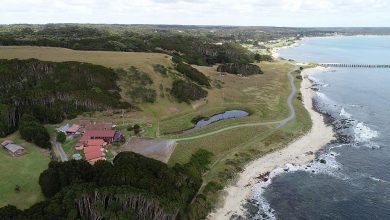
NZ property values rise 0.4% to kick off 2024
"Queenstown, once again, stands out in terms of house price performance. Values there were up by 0.7 percent in January, and are 6 percent higher than a year ago, standing at nearly $1.8m"
The CoreLogic House Price Index rose for the fourth month in a row in January, although the 0.4 percent increase was a deceleration in the pace of gains on both November (0.7 percent) and December (1.0 percent).
Since September’s trough, property values have now risen 2.5 percent, bringing the national average to $928,184, or 11 percent below the recent peak. Wellington and Hamilton recorded mild growth of 0.1 percent and 0.2 percent respectively in January, while Tauranga and Dunedin saw gains of at least 0.6 percent.
CoreLogic NZ Chief Property Economist, Kelvin Davidson, said the slowdown in the pace of monthly gains is a timely reminder the emerging recovery trend remains tentative and shows some variability from region to region.
“The mood in the housing market has certainly turned since the middle of last year, given a fillip by the change of government, and its property policies that are friendlier to investors.
“This mindset shift is reinforcing the effects of the underlying fundamental drivers, such as continued employment growth, and high migration,” he said.
“The Reserve Bank’s proposals around loan to value and debt to income ratio rules, if enacted, will operate in tandem, however, the DTIs may not bind straightway so the net effect on the market in the near term could be positive.”
“Certainly, some buyers will already be starting to anticipate a likely easing in the LVR rules from the middle of the year, which will allow more owner-occupiers to purchase with less than a 20 percent deposit, and reduce the required deposit for investors from 35 percent to 30 percent.”
“Even though most indicators are pointing up, there’s still the challenge of high mortgage rates to contend with, both for new borrowers and those who are repricing existing loans. Granted, there’s now a whiff of official cash rate cuts on the horizon, which will help mortgage rates to drift lower on the popular, shorter fixed terms, but that’s probably a story for the second half of 2024, not the first.”
CoreLogic House Price Index – National and Main Centres
| Change in property values | Average Value | ||||
| Month | Quarter | Annual | From peak | ||
New Zealand | 0.4% | 2.1% | -2.7% | -11.0% | $928,184 |
|
Auckland | 0.5% | 2.2% | -4.7% | -15.2% | $1,289,768 |
|
Hamilton | 0.2% | 1.3% | -3.1% | -11.1% | $807,938 |
|
Tauranga | 0.6% | 3.2% | -3.7% | -12.4% | $1,038,691 |
|
Wellington | 0.1% | 1.8% | -2.0% | -20.1% | $909,498 |
|
Christchurch | 0.4% | 2.3% | 1.9% | -3.2% | $757,881 |
|
Dunedin | 0.7% | 3.1% | -1.3% | -11.2% | $634,894 |
|
CoreLogic House Price Index – Main Centre Average Value
CoreLogic House Price Index – Auckland
| Change in property values | Average Value | |||
| Month | Quarter | Annual | From peak | |
Rodney | 0.4% | 1.2% | -4.6% | -11.8% | $1,252,761 |
North Shore | 0.3% | 3.5% | -1.3% | -11.6% | $1,481,330 |
Waitakere | 0.0% | 1.6% | -5.4% | -17.7% | $1,008,909 |
Auckland City | 0.4% | 2.1% | -6.7% | -16.4% | $1,474,694 |
Manukau | 1.1% | 2.9% | -2.5% | -14.7% | $1,173,250 |
Papakura | 0.3% | -0.1% | -2.5% | -14.0% | $932,562 |
Franklin | 2.1% | 1.6% | -1.6% | -13.0% | $917,421 |
Within Auckland, Franklin recorded the strongest rise in average property values in January, with a lift of 2.1 percent.
“A bit of lingering weakness in that market over the prior months was always likely to be ‘caught up’ at some stage,” Mr Davidson said.
Manukau also saw values rise by more than 1 percent, but the rest of the Auckland sub-markets were a little softer in January, including no change in Waitakere. Over the past three months as a whole, Papakura has been a bit sluggish (-0.1 percent), but most other parts of Auckland have seen gains of 1.6 percent or more.
“Auckland’s property market has certainly started to turn around, and although significant net migration inflows are probably boosting rents more than house prices at this stage, the effects of strong population growth will still be accumulating across the various segments,” Mr Davidson said.
CoreLogic House Price Index – Wellington
| Change in property values | Average Value | |||
| Month | Quarter | Annual | From peak | |
Kāpiti Coast | 0.7% | 2.5% | -6.3% | -18.6% | $809,062 |
Porirua | -1.0% | 1.5% | -0.8% | -17.3% | $836,821 |
Upper Hutt | 0.4% | 2.7% | -0.7% | -22.2% | $746,478 |
Lower Hutt | 0.5% | 4.7% | -1.4% | -20.9% | $793,327 |
Wellington City | 0.2% | 0.6% | -2.7% | -20.6% | $1,023,966 |
Wellington’s sub-markets generally saw further growth in January, with Lower Hutt and Kapiti Coast both up by at least 0.5 percent. But Wellington City itself was a little more subdued (0.2 percent rise), and Porirua dropped by 1 percent to start the year.
Mr Davidson said when taken over a slightly longer three-month horizon, Porirua has still shown an increase of 1.5 percent, with Lower Hutt up by nearly 5 percent, and gains of two to three percent over the same period in Kapiti Coast and Upper Hutt.
“The wider Wellington property market is certainly playing a part in the emerging national upturn, especially in the two Hutt Valley areas. That said, these parts of the country, and especially Wellington City itself, could become very interesting markets to watch should the Government decide to pare back the size of public sector workforces more significantly in the coming years,” Mr Davidson said.
Regional House Price Index results
The expectation that 2024’s property market upturn could be mercurial is reinforced by the provincial value results for January.
For example, after falls in December, both Gisborne and Napier bounced back in January, rising by 3.0% and 1.4% respectively. By contrast, after a sizeable rise in December, Rotorua fell back in January, while Hastings also saw property values dip a little on the latest data.
Mr Davidson noted that Queenstown, once again, stands out in terms of house price performance. Values there were up by 0.7 percent in January, and are 6 percent higher than a year ago, standing at nearly $1.8m.
“Clearly, Queenstown is a still a magnet for wealthy buyers, whether local or from out of town. And strong demand to live and work in the area as tourism snaps back is seemingly contributing to price pressures as well,” he said.
CoreLogic House Price Index – Other Main Urban Areas (ordered by annual growth)
| Change in property values | Average Value | |||
TA | Month | Quarter | Annual | From peak | |
Whangārei | 0.0% | 0.4% | -7.1% | -12.3% | $739,827 |
Rotorua | -3.3% | -1.6% | -5.5% | -13.3% | $642,462 |
Gisborne | 3.0% | 2.4% | -5.4% | -10.0% | $610,183 |
Napier | 1.4% | 1.2% | -4.6% | -15.5% | $756,079 |
Whanganui | 0.1% | 3.5% | -3.0% | -11.4% | $507,403 |
Nelson | 0.3% | 1.3% | -2.9% | -10.3% | $782,829 |
New Plymouth | 0.8% | 3.0% | -1.5% | -4.6% | $716,288 |
Palmerston North | 0.6% | 1.8% | -1.3% | -14.1% | $648,190 |
Invercargill | 0.7% | 1.3% | -0.1% | -3.8% | $463,840 |
Hastings | -0.2% | 1.9% | 1.3% | -11.7% | $800,446 |
Queenstown | 0.7% | 6.2% | 6.0% | 0.0% | $1,781,475 |
Property market outlook
“We continue to expect sales volumes and house prices to track higher in 2024, but with variability from month to month, and across regions. The main centres are no doubt being boosted at the moment by extra demand from large migration inflows. But with typically higher ratios of house prices to incomes than the provinces, the proposed DTI rules may become more binding in the cities over the medium term after they come into effect,” Mr Davidson said.
“A key theme for this year will also be the relative shifts in activity for first-home buyers and mortgaged investors. In 2023, first home buyers had a blinder, dominating in terms of market share. However, higher rents, greater interest deductibility, lower deposit requirements, and a possible drop in mortgage rates could pull some investors back in to the market in 2024,” Mr Davidson concluded.

AccomNews is not affiliated with any government agency, body or political party. We are an independently owned, family-operated magazine.







